Actually, at the activity introduction meeting last Friday, it was announced that we would go to the Ma Chong circuit in Guangdong for a dynamic test drive activity. As an ordinary person who has only bought a car for a year and a half, the only way I could connect with the circuit was to watch bloggers’ new car track test drive experiences or some small track races participated by bloggers among many videos. I was really envious of them learning the rules on the track and speeding on the track. I have never been on the track in my life, but I didn’t expect this Pengpai Explorer activity would fulfill my dream of being on the track. 
On Saturday morning, after having breakfast, we took the bus to the track. Due to the confidentiality issues, everyone’s mobile phones were placed in security bags and couldn’t be used to take photos. However, there would be a dedicated photographer to take photos for us, and these photos would be provided to us later.
1. First Impression
As we walked into the gate of the track, we saw a newly colored Peng Wing Door P7i standing at the entrance of the track. This car was also the one we took a group photo with after the test drive. 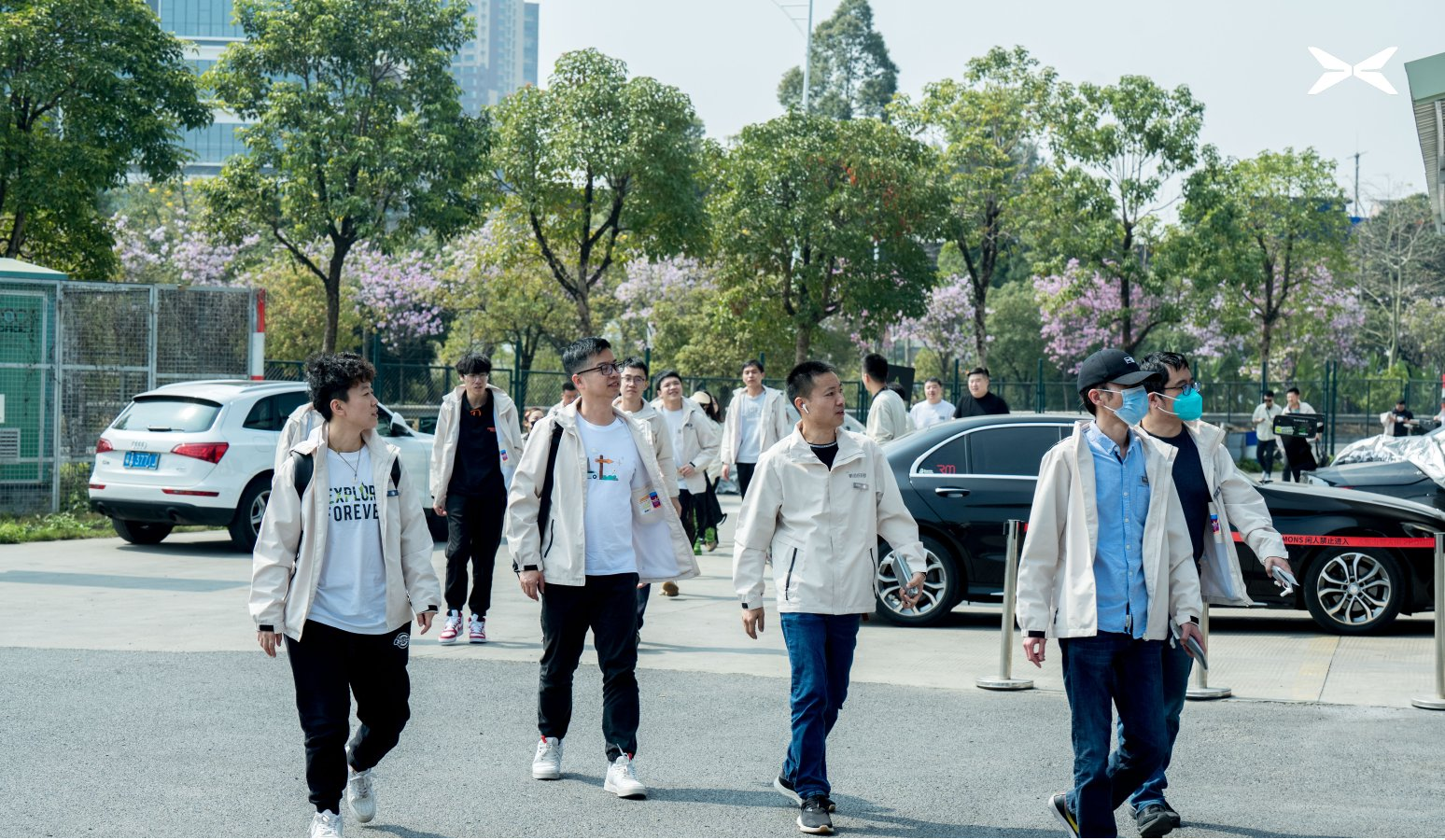
At first glance, the new color scheme really catches people’s attention. Unlike the super shiny green of the old Peng Wing Door, the new color gives people a sense of stability, which makes it easily handled by both young and mature drivers. As we approached the car, we found that the interior was white. I have to say that the white interior is really beautiful, very delicate and good-looking. I believe that the combination of interstellar green exterior and white interior must be the best-selling combination.  Because I had encountered a disguised P7i when charging at a shopping mall before, I had a general understanding of its appearance. While everyone was inspecting the appearance of the car, I immediately went inside and sat down. My first feeling after sitting down was that it was comfortable! The seats were obviously different from my old P7 – the seats were noticeably softer, the curve of the backrest was more ergonomic, and the waist was very comfortable.
Because I had encountered a disguised P7i when charging at a shopping mall before, I had a general understanding of its appearance. While everyone was inspecting the appearance of the car, I immediately went inside and sat down. My first feeling after sitting down was that it was comfortable! The seats were obviously different from my old P7 – the seats were noticeably softer, the curve of the backrest was more ergonomic, and the waist was very comfortable. 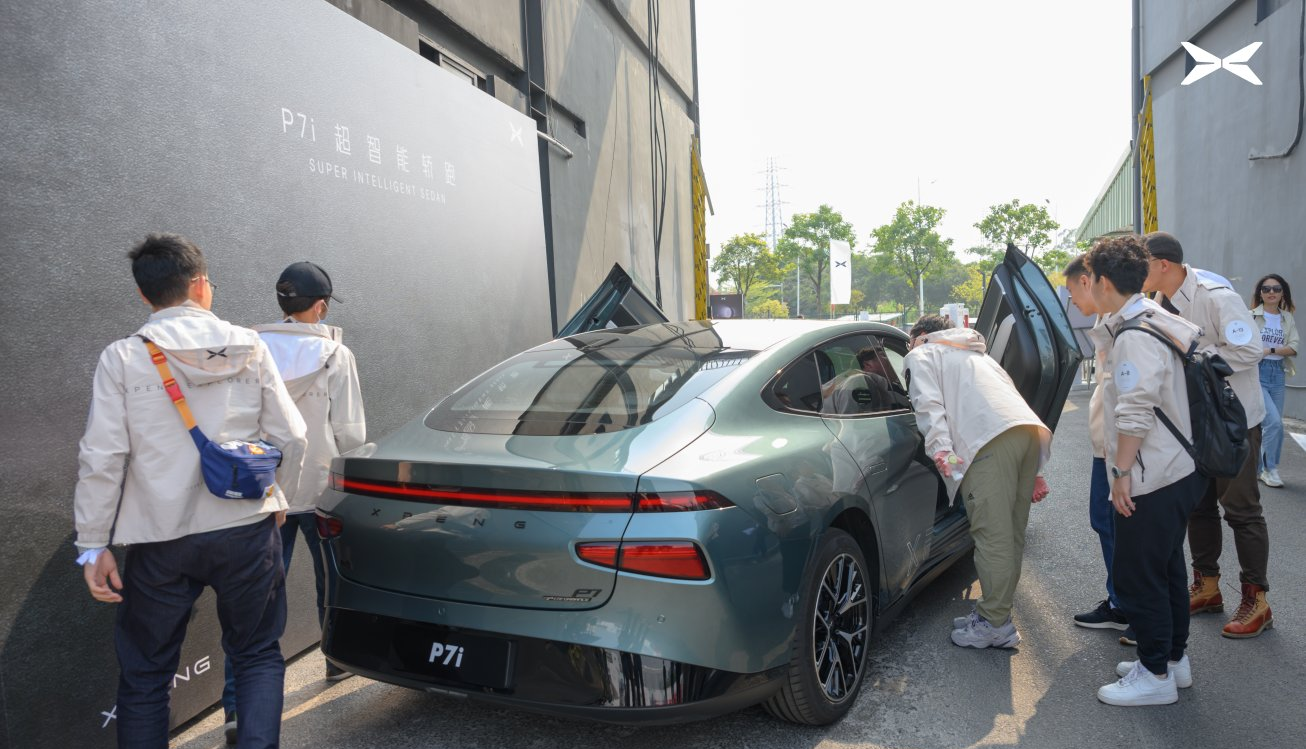
2. Presentation

Next was the sign-in and grouping, followed by the pre-test drive presentation. To begin with, I really have to give credit for the speaker’s opening remarks. The leader’s speech wasn’t formal and the language was direct; we welcomed the heavy guest – the product manager of the XPeng P7, who was very handsome and also a longtime P7 owner himself.
He introduced the new features of the P7i: 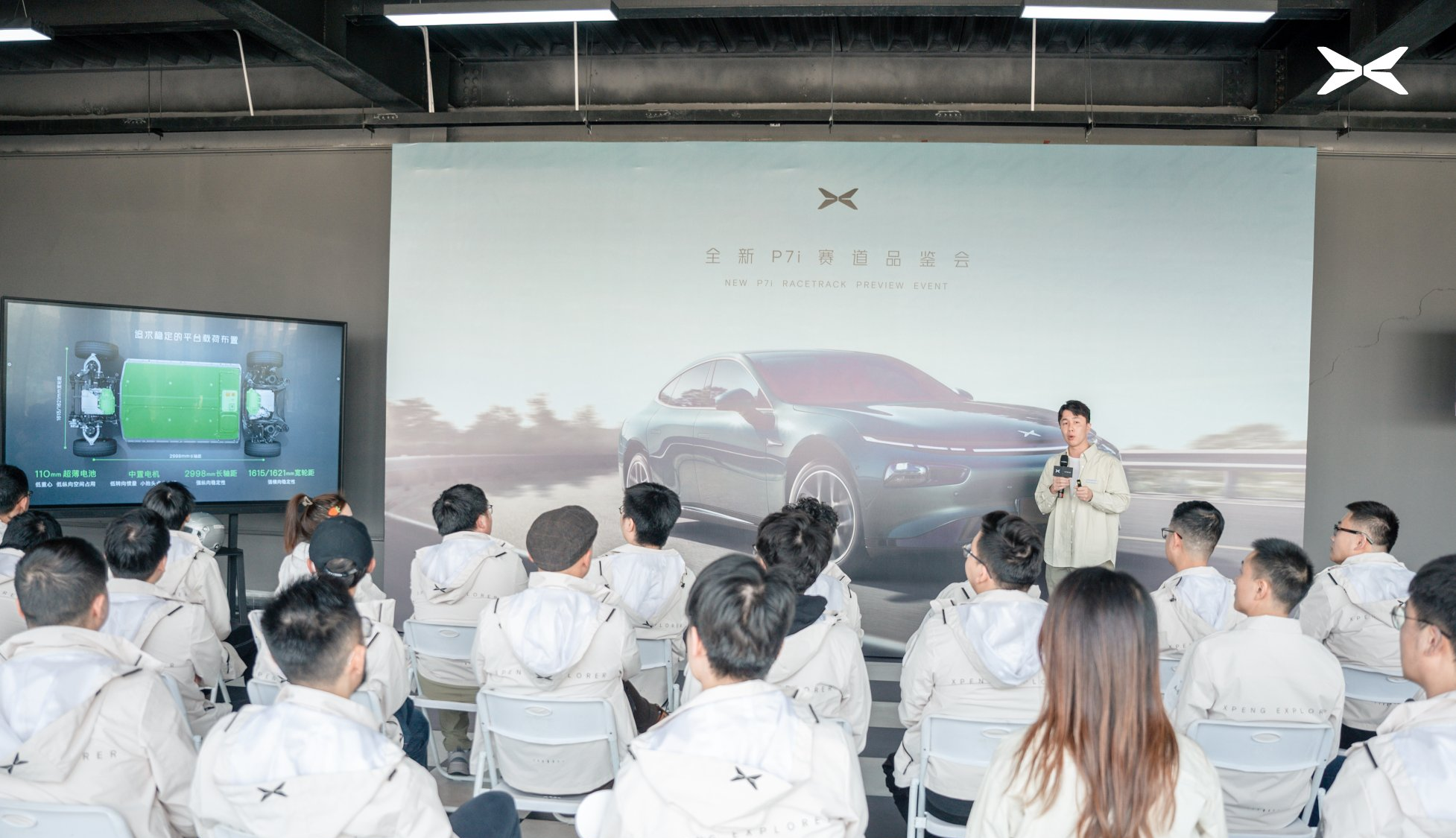
The new P7i uses a combination of a mid-motor and a 110mm ultra-thin battery, which brings a super-low center of gravity of 460mm. The entire vehicle’s center of gravity is just at the driver’s seat, bringing better headroom, better anti-torsion performance, and stronger vehicle stability. 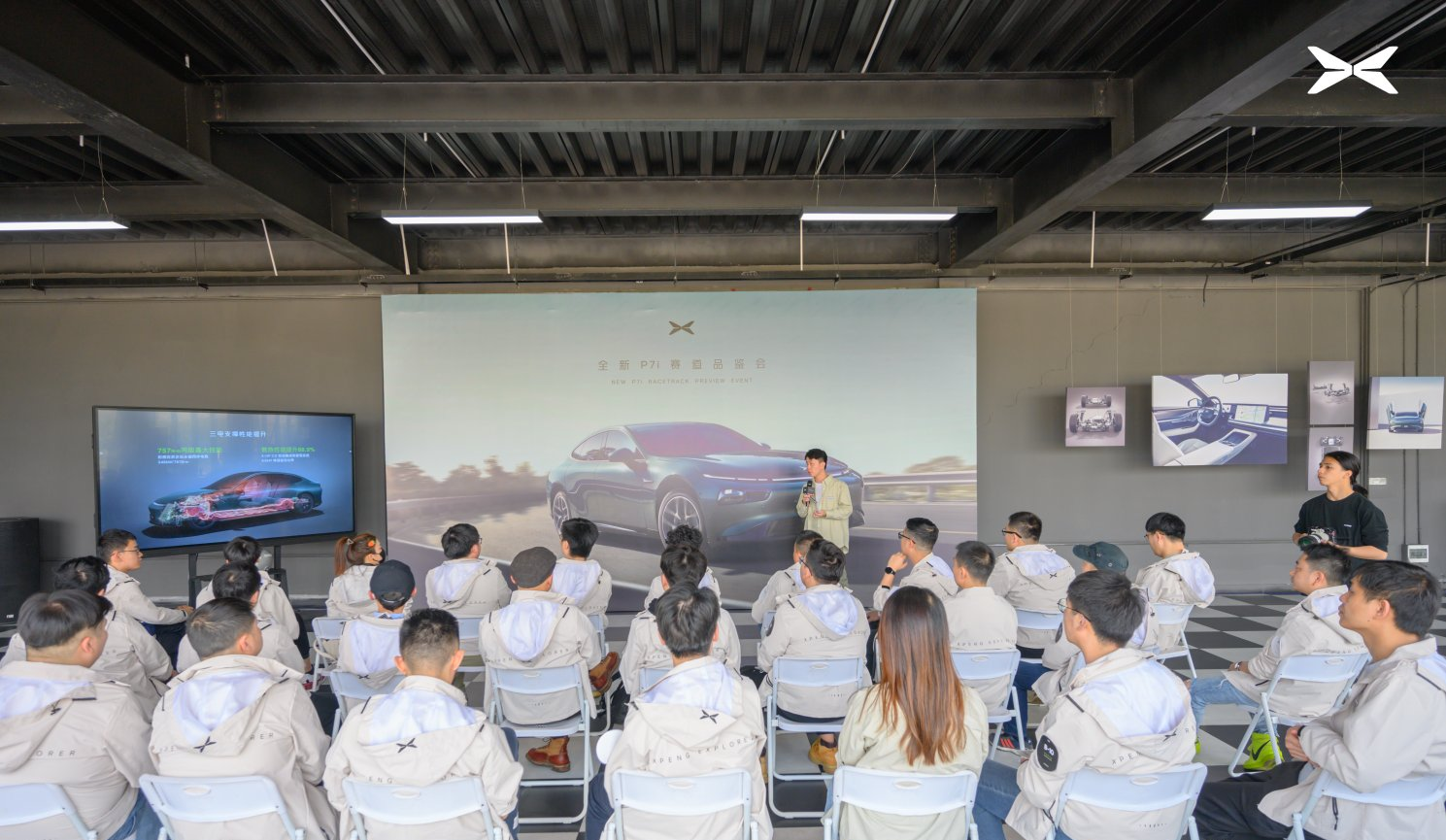
The new P7i uses thermal management system 2.0. This time, a heat pump is added, but also because of the heat pump, the front trunk has been removed. The heat generated by components such as the vehicle chip, the AD chip, and the vehicle screen will be stored and transported to the battery’s position that needs it most. This can reduce the range loss due to battery heating in winter, improve heating efficiency by 2 times, and increase winter range by 15%. 
The motor power has increased, the driving performance has improved, and the four-wheel drive acceleration is 3.9 seconds, and the rear-wheel drive is 6.4 seconds; now the top speed can reach 200 km/h and can maintain a speed of 190 km/h for half an hour. This is also one of the benefits brought by the upgraded thermal management system, which can maintain the performance release for a longer period of time, without the power protection caused by overheating like some other electric cars cannot run even one lap around the track. 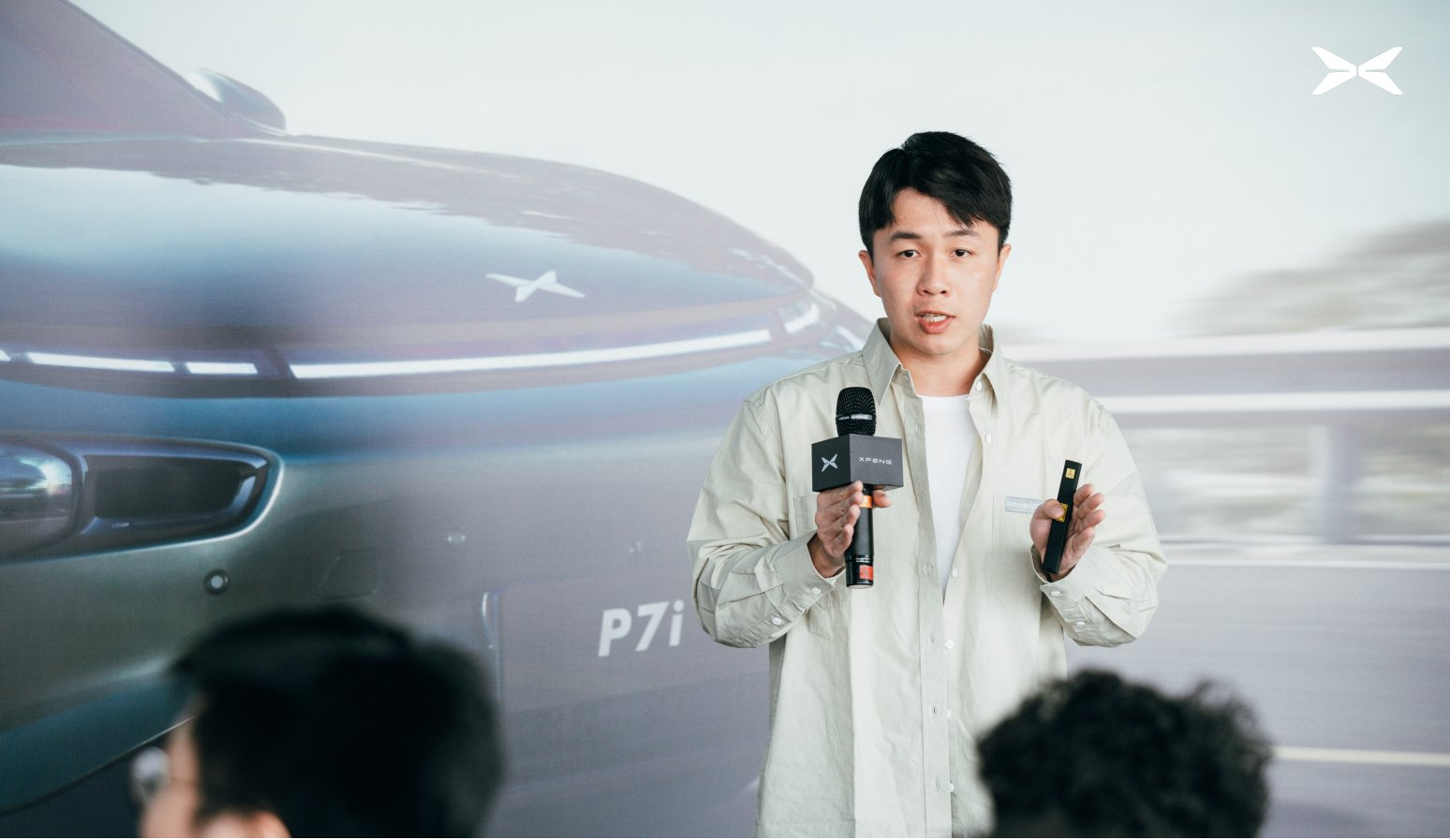 The iBooster 2.0 brake system and four-piston calipers of the new P7i have reduced the braking distance to 33.3m per 100km, a significant improvement compared to the old version with a braking distance of 34m. The suspension consists of virtual main pivot front double wishbone and rear five-link, along with SACHS shock absorbers equipped across the entire range, and a redesigned chassis for enhanced stability.
The iBooster 2.0 brake system and four-piston calipers of the new P7i have reduced the braking distance to 33.3m per 100km, a significant improvement compared to the old version with a braking distance of 34m. The suspension consists of virtual main pivot front double wishbone and rear five-link, along with SACHS shock absorbers equipped across the entire range, and a redesigned chassis for enhanced stability. 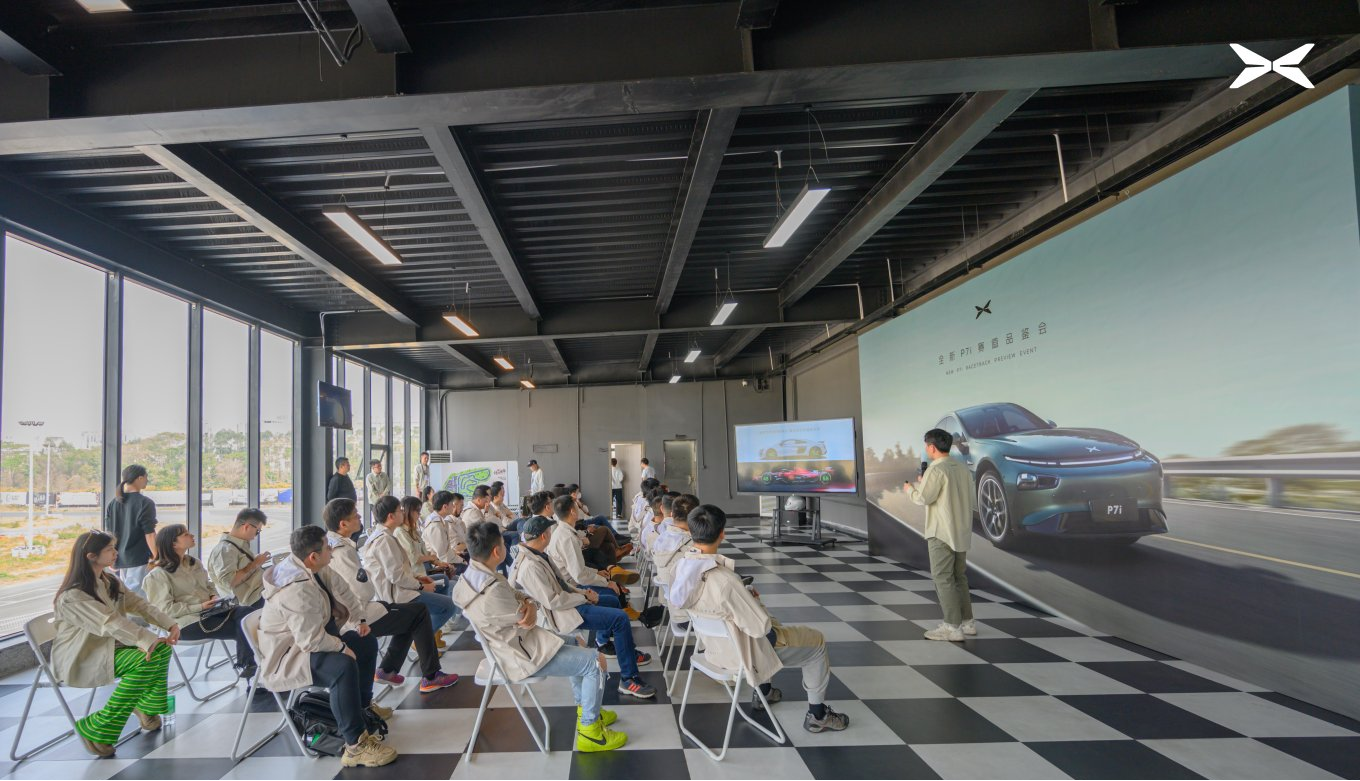
Another benefit of the motor being in the middle is its sportier 47:53 front-to-rear weight distribution, similar to that of the Audi R8 and F1 cars. The intelligent torque distribution system exclusive to the four-wheel drive system can intelligently distribute torque during cornering, making the car more willing to enter corners. 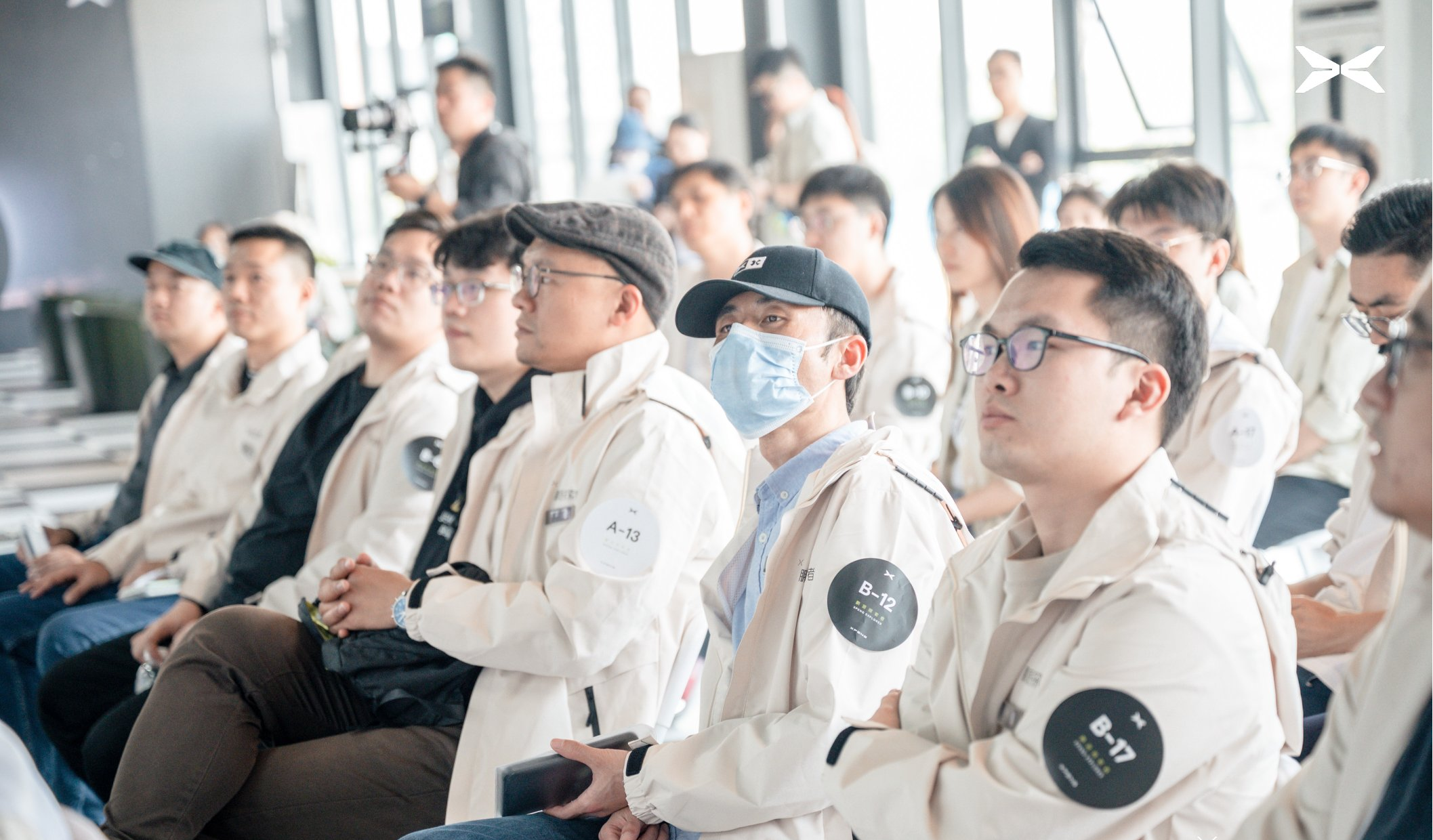
The foam material used in the seat filling has been updated to provide both softness and hardness. It is soft and comfortable during normal driving and hard enough to provide good support during intense driving. The rear seat cushion has been lengthened and the backrest angle increased by 1 degree, providing a better rear passenger experience. The more open ESP calibration allows for some oversteer of the vehicle under controlled conditions, making driving more enjoyable. 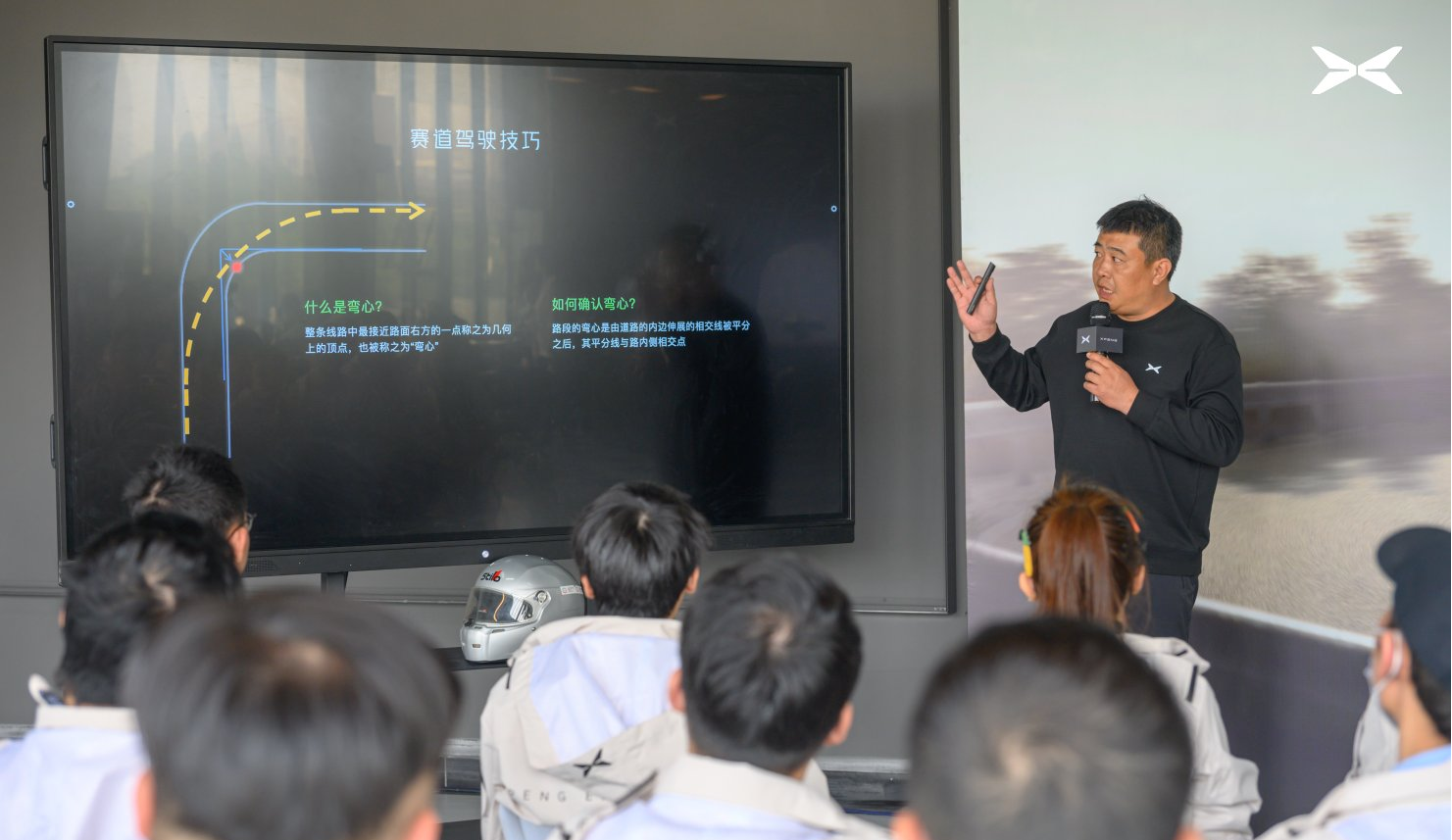
In summary, the new P7i has further improved its handling while maintaining a balance between comfort and sportiness. After hearing about these features of the P7i, I can’t wait to test drive it! Our track coach explained some basic racing knowledge to us, such as the lines of “outside-inside-outside” and “slow-in fast-out”, before we went downstairs to the test drive experience, where we took a big group photo on the track with two Peng-Wing P7s in old and new color schemes behind us, looking absolutely stunning! 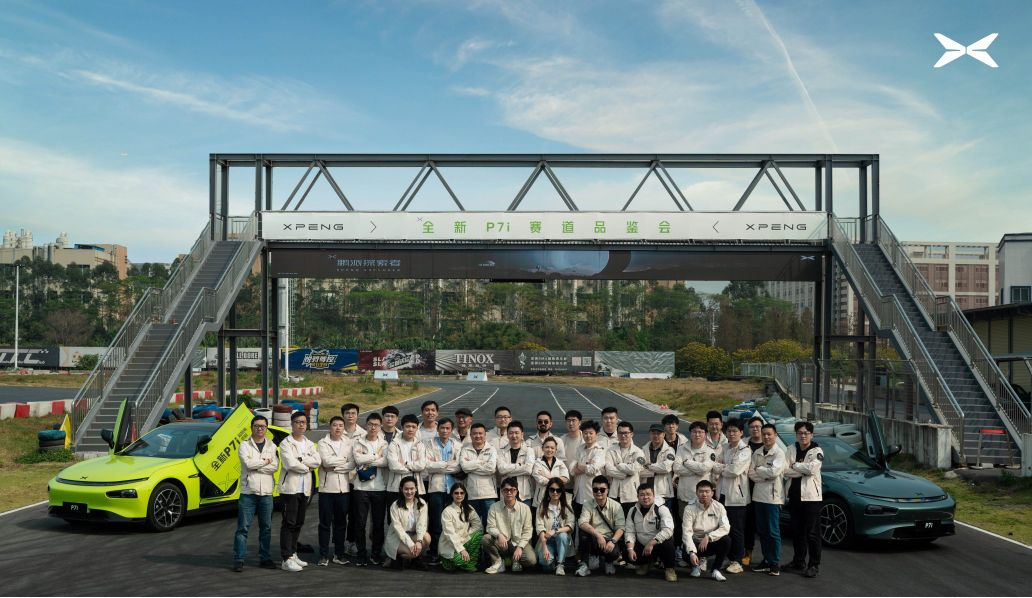
Gymkhana
Gymkhana is a type of motorsport that requires no high threshold in terms of the track or vehicle and is considered a very popular racing activity among the general public.
The origin of Jin Ka Na comes from India, originally referring to equestrian obstacle races. Riders would navigate around poles set up in a predetermined path, cross several obstacles, and the first to reach the finish line would win. However, with the evolution of time, the horses were replaced by cars and the sound of horse hooves hitting the ground was replaced by the screeching sound of tires. 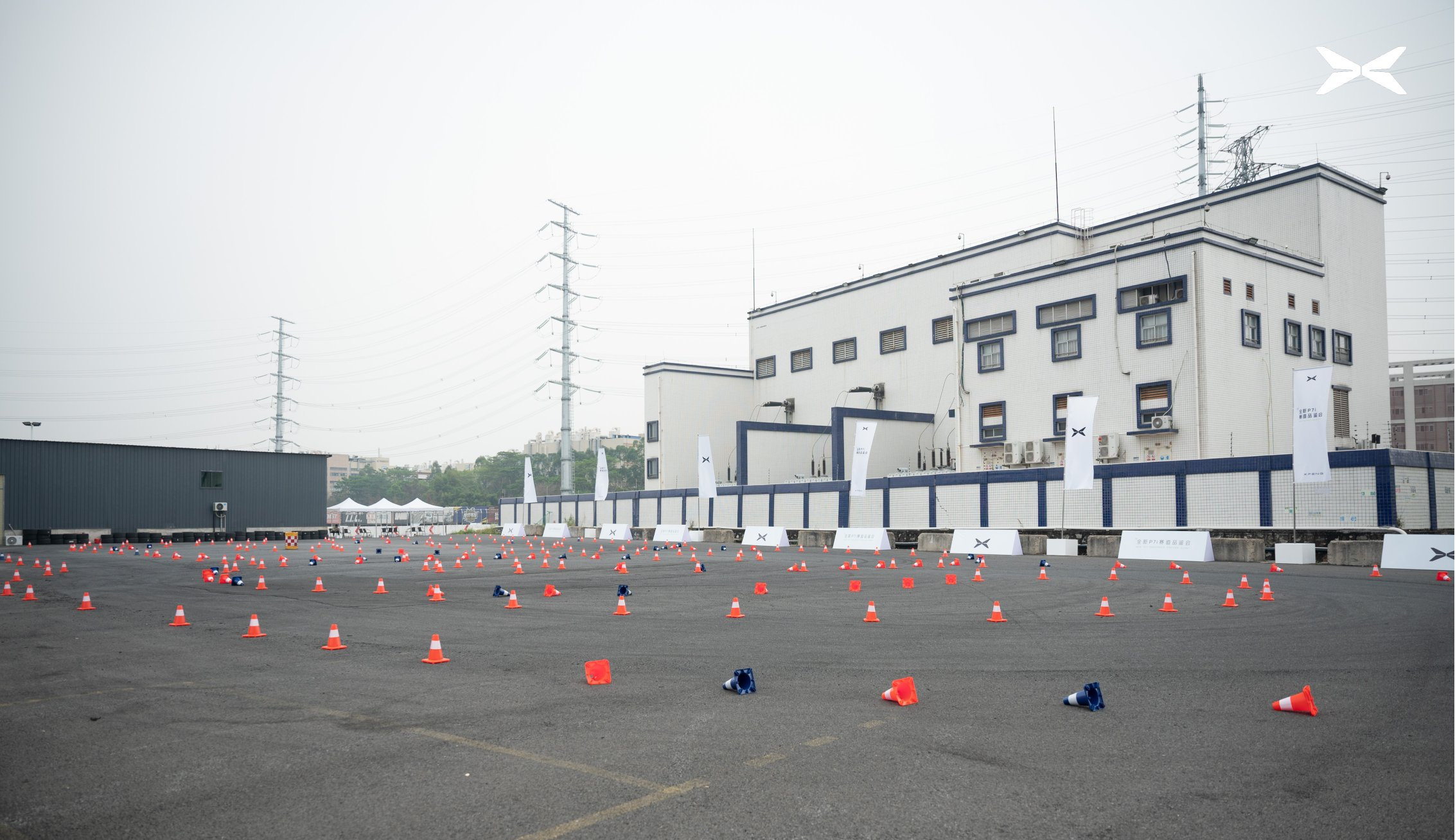
We divided into two groups, A and B, and B group was the first to participate in the Jin Ka Na event. I was the first in B group, which made me the first or second person among all car owners nationwide to truly drive a P7i! 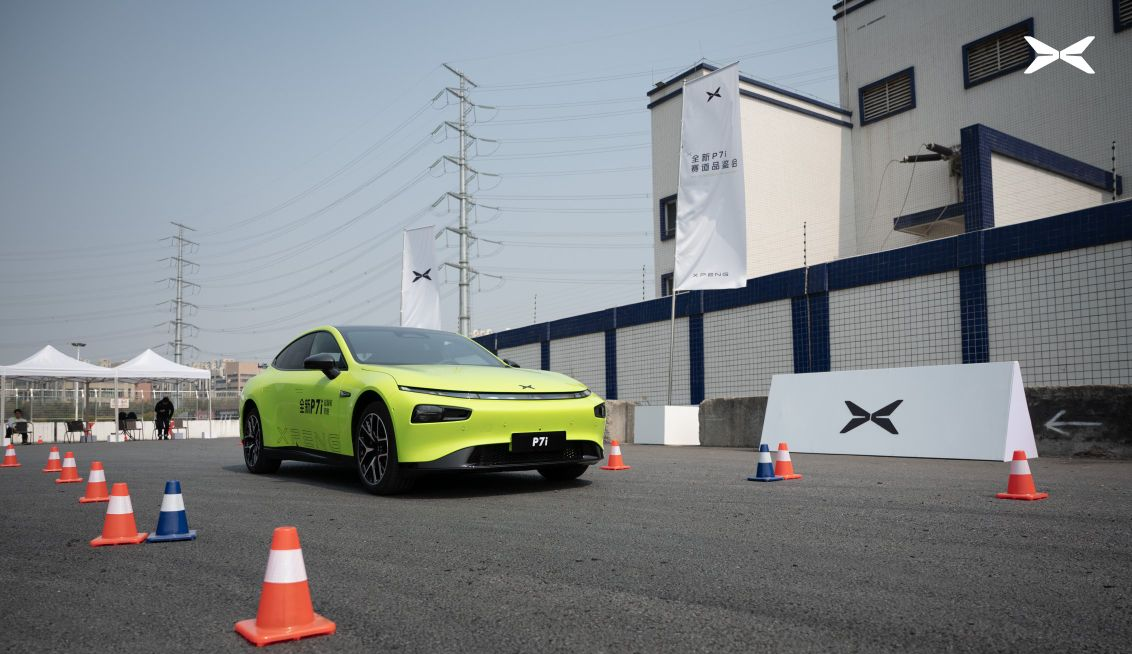
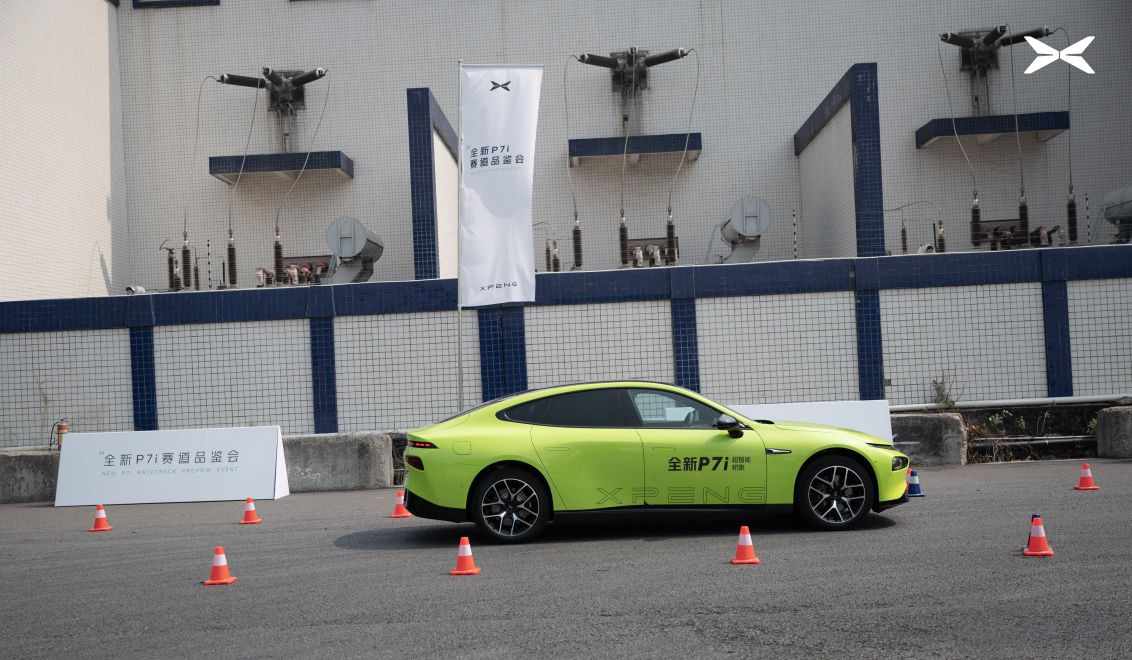
The test car was a super-shimmering green four-wheel drive Pengyi version. The first feeling when sitting in the car was a cool breeze under the butt. The seat ventilation was turned on, and it was obvious that the seat ventilation was qualitatively improved compared to the old P7. The seats were also particularly comfortable. The car was already in sport mode, so the main driving screen displayed three circular blocks: G value, speed, and output power. The center control interface was the same as the G9, version 4.0 system.
After adjusting the steering wheel and seat, we are ready to go by buckling up. 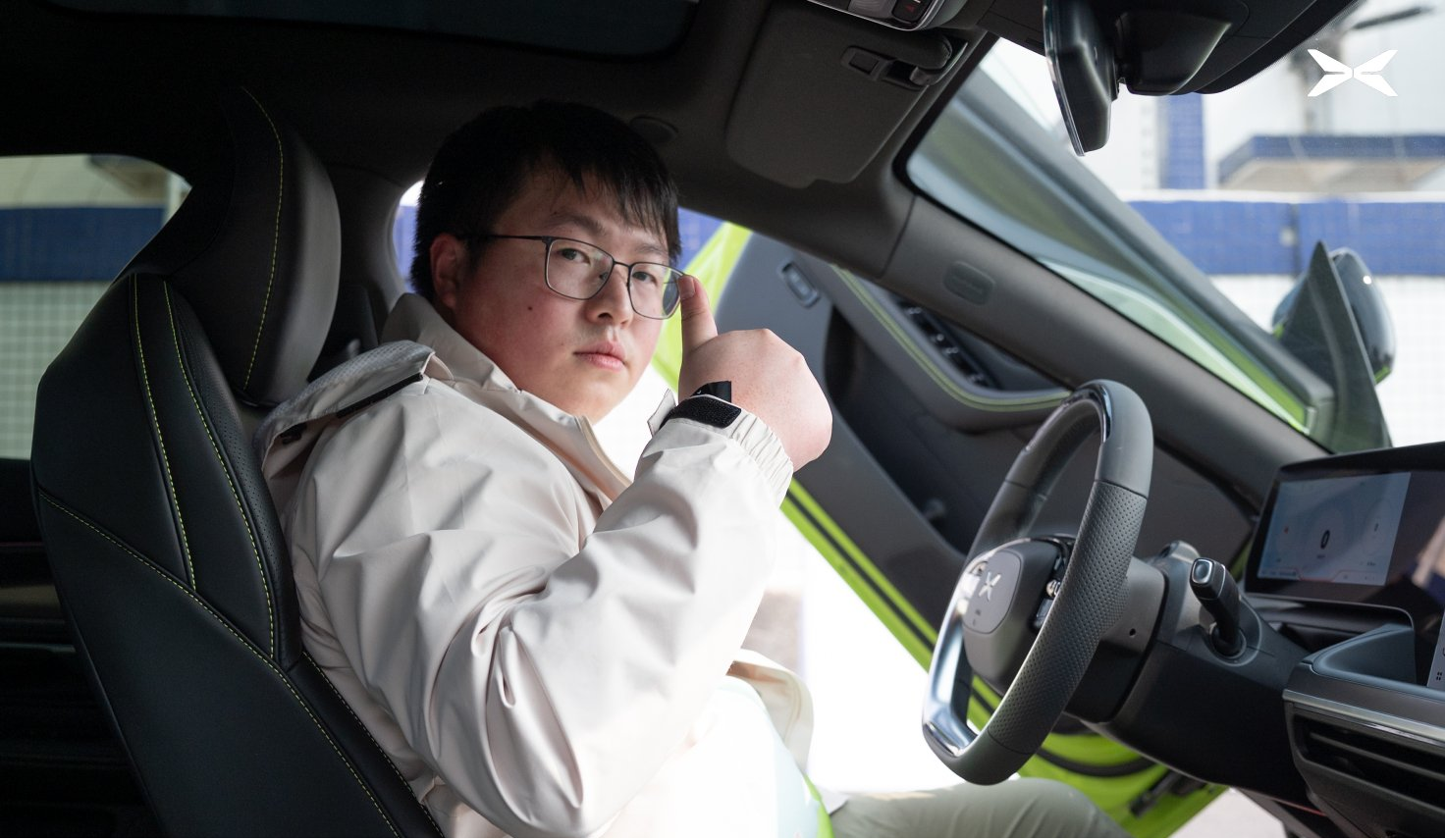
Since my own car is a rear-wheel drive version, I usually drive in sports mode with high recovery. I started with half of my usual throttle, but the car rushed out directly. The response was very sensitive, which scared me. The same reaction occurred to Ajie, who was sitting next to me. P7i’s acceleration of 3.9 seconds to break the hundred is indeed impressive.
After adjusting our mindset, I demonstrated my precise control over the accelerator and smoothly navigated through turns, including left turns, U-turns, and S-turns. The new chassis is excellent at controlling body roll, coupled with the G9 steering wheel, which has an excellent grip. 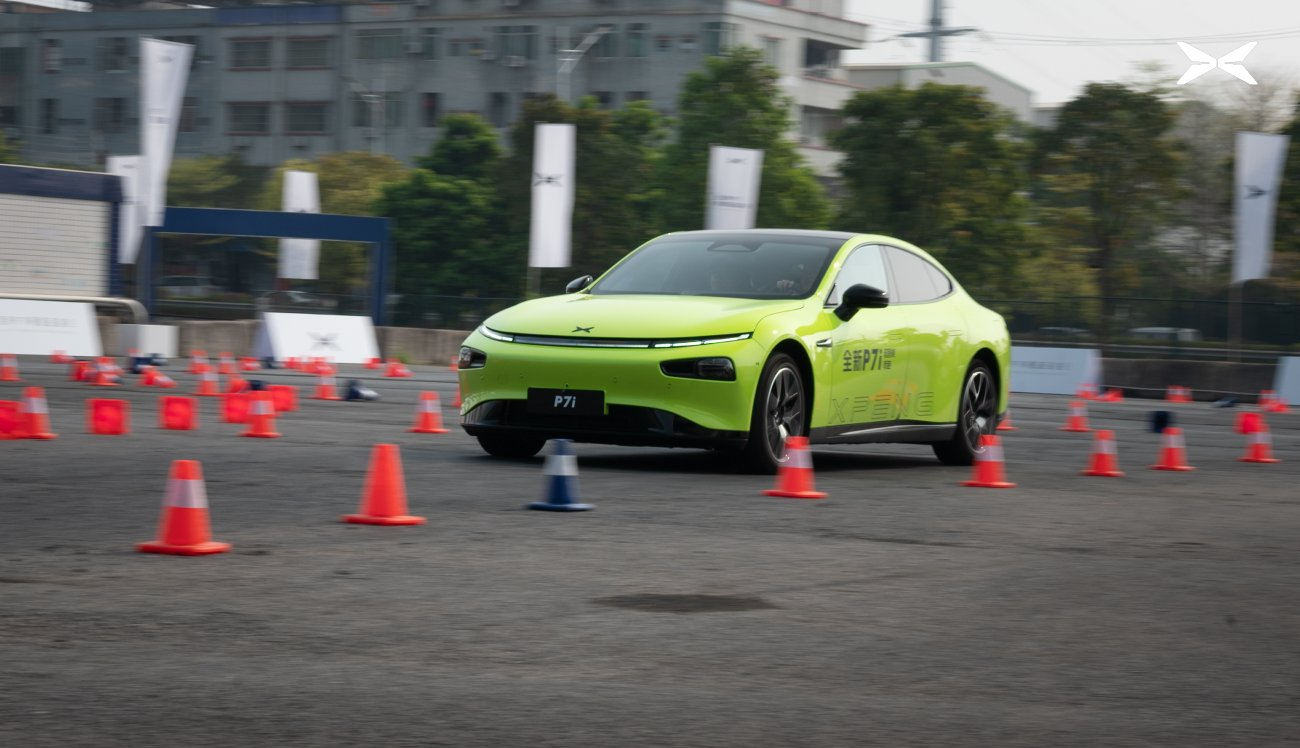
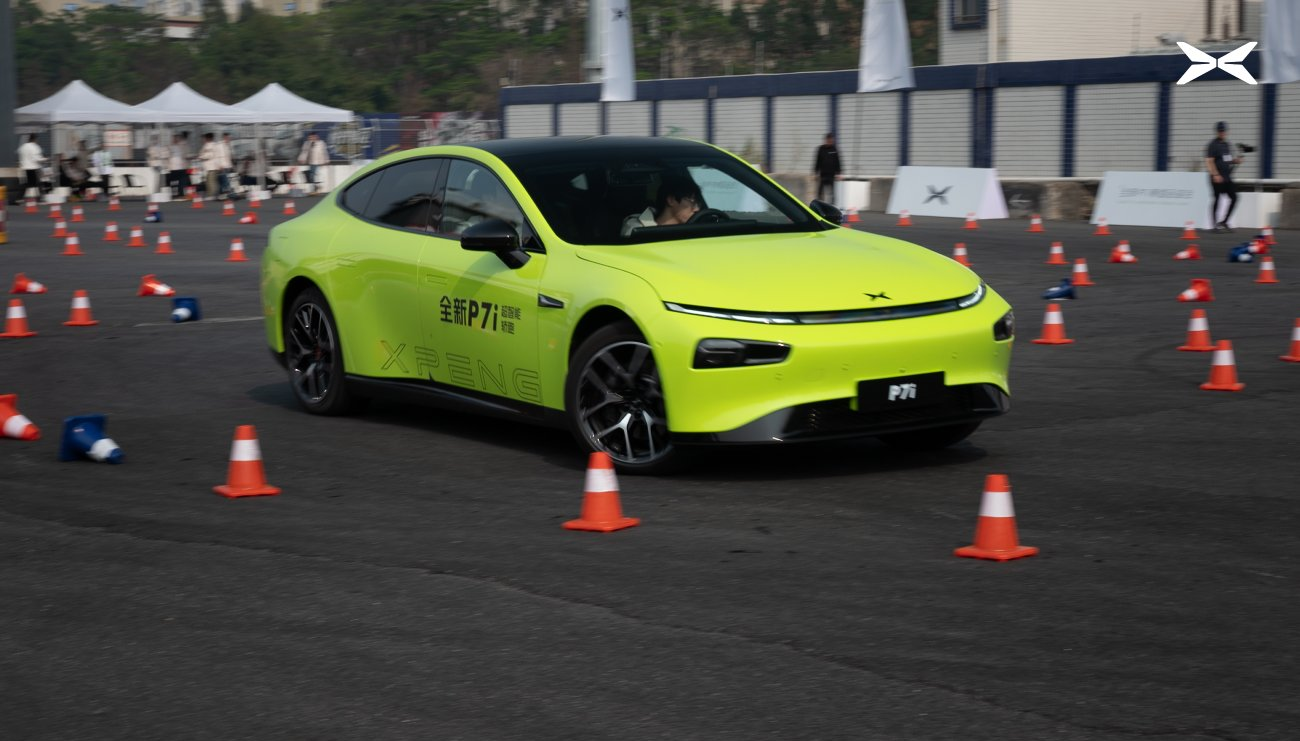 Originally, everyone had only 2 laps of the gold card Nurburgring, but at the end of the second lap, the coach made a gesture to me which I thought meant there was still one more lap to go, so I went for it and ended up being the only one who completed 3 laps with a smile.
Originally, everyone had only 2 laps of the gold card Nurburgring, but at the end of the second lap, the coach made a gesture to me which I thought meant there was still one more lap to go, so I went for it and ended up being the only one who completed 3 laps with a smile.
While waiting for the next round, I got a bit bored and decided to experience being in the co-driver’s seat during the superman test drive. But as soon as he got into the car, he told me I was a pretty aggressive driver. I was instantly frightened, and quickly adjusted my seat to straighten my legs and rest comfortably on the backrest, tightening the seat belt and gripping the handrail, waiting for him to perform.
As expected of a maestro, he accelerated and braked abruptly, took bends at high speed, and, although I was mentally prepared, I was about to collapse entirely, and wanted to shout out loud, though I couldn’t get a sound past my throat. When turning around bends, my entire face was stuck to the glass, with an uncontrollable expression.
The next lap was a lot better, and I could feel the body’s posture and the sound of the tires rubbing against the ground. After two laps, I was a bit confused, and the thrill was too much, my brain still hadn’t recovered, and I had a headache on the temples for a while before I finally recovered. However, Superman said he enjoyed driving it, and the P7i handles no less well than the Model 3P!
After everyone had finished driving the gold card Nurburgring, they all praised the P7i with a thumbs up. 
Track
There was a coach sitting in the co-driver’s seat during the track, and the lead vehicle driven by the coach will take us around on the first lap to teach us where the braking points are, as well as the correct way to drive. But I have to say that when listening to the coach’s explanation, it all seemed quite simple, like an outer-inner-outer turn or slow in and fast out. I’ve seen all these things in videos before. However, when you actually get on the track, you realize it’s still quite a challenge. Although there are blue posts placed as markers for the braking points, your speed is different, and your braking time may be slightly different, and then the braking force may be different as well. When entering a bend, how much steering wheel should you apply, and should you bring in some acceleration? When should you turn back, and when should you use the accelerator? These are all things you need to learn.
As someone who hasn’t driven much, I hardly understand what handling is, but I can feel that the body is very stable, there is very little leaning, and the acceleration is very fast. If it were my old P7 before adding the anti-sway bar, the body would lean a lot when going fast around corners, giving me a sense of panic. Although the new P7i is much better after adding the anti-sway bar, it’s still much better. Maybe this is the help brought by intelligence. I just need to steer and control the brakes and accelerator, and as an ordinary person, I can fly on the track. Perhaps this is the meaning of intelligence, you just rush forward and leave the rest to the computer! 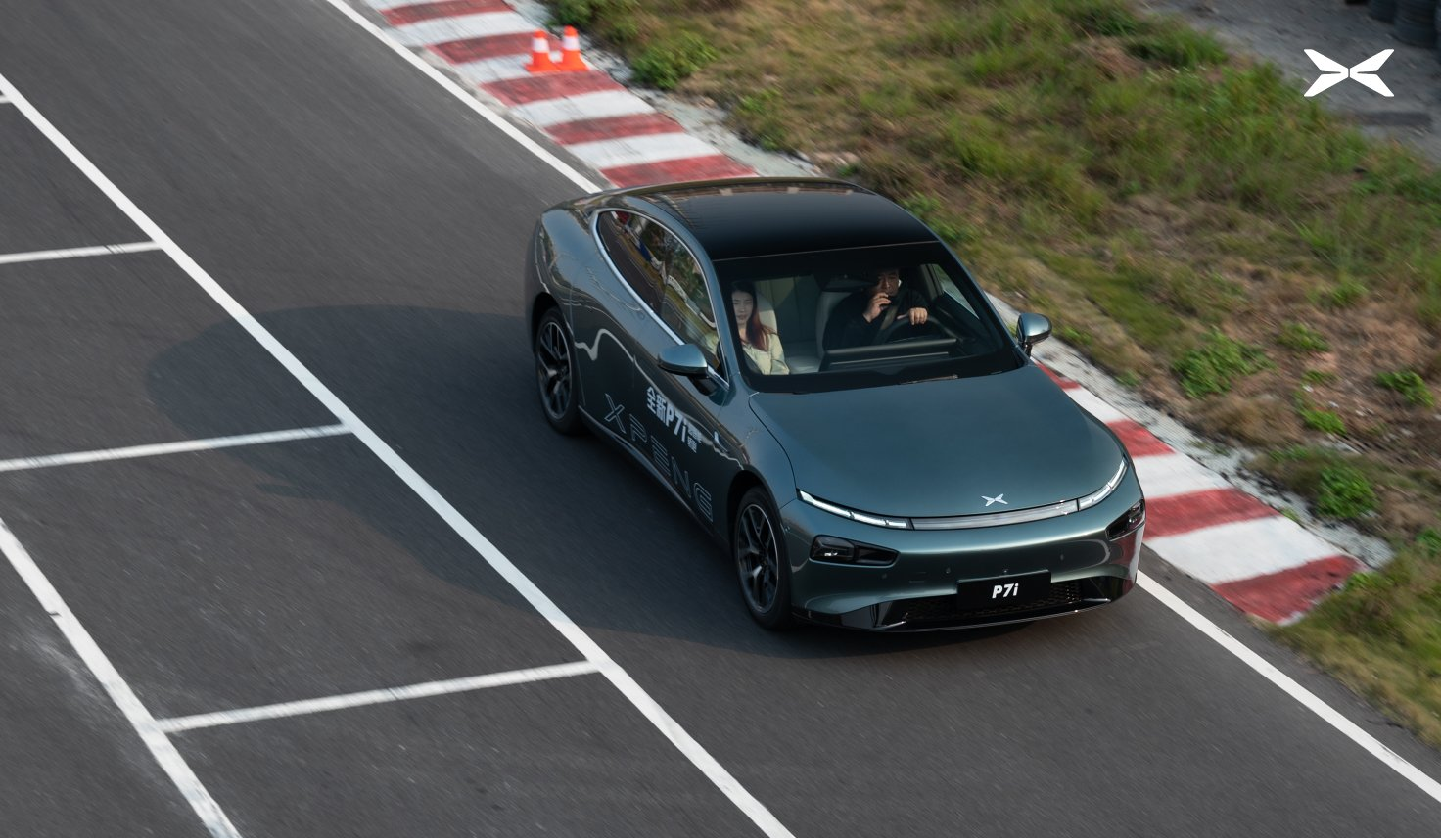
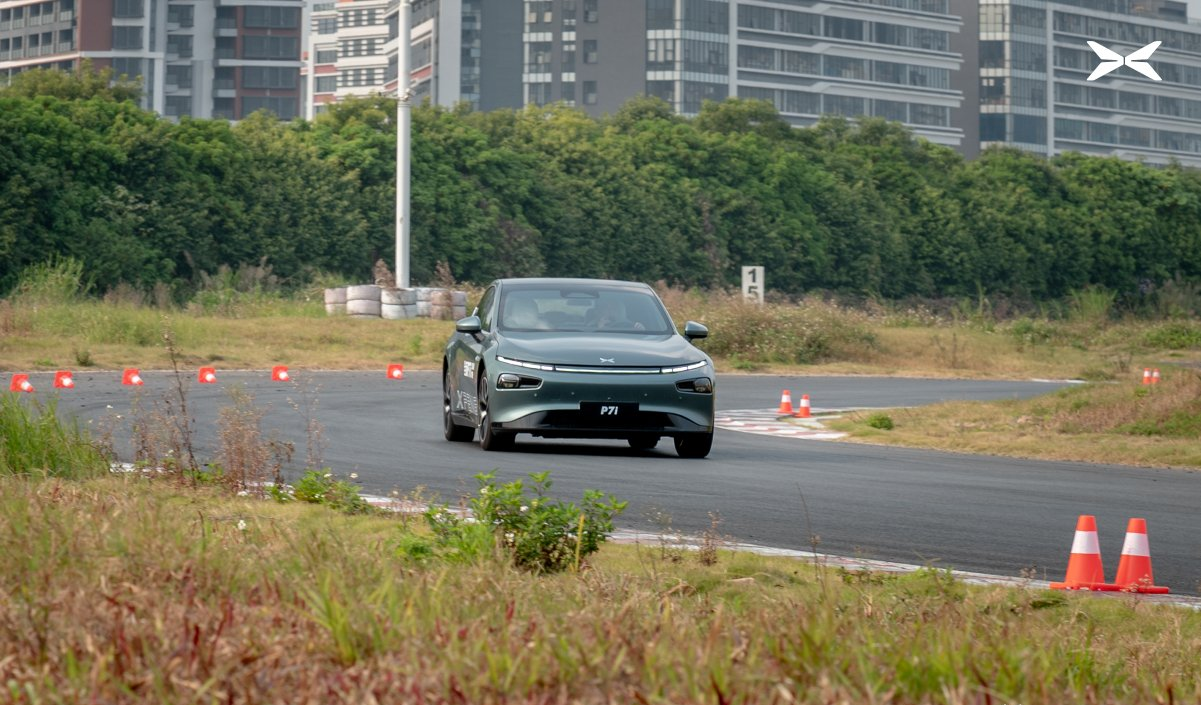
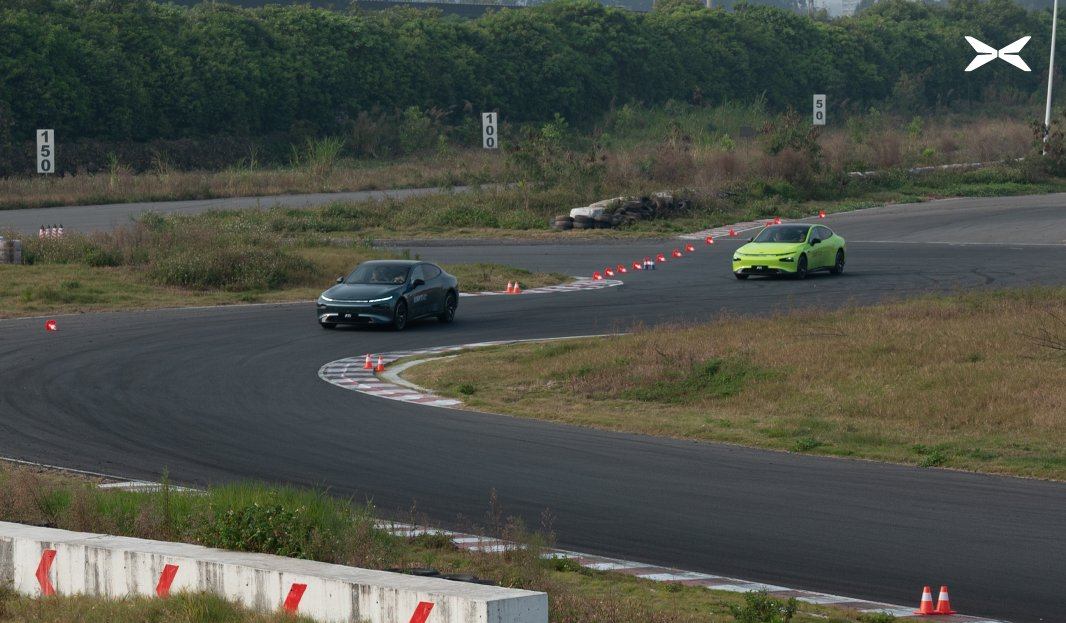 Afterwards, I test rode in the coach’s car, the rear-wheel drive P7i. The first time I sat in the back seat, I could clearly feel the difference. Compared to the previous P7 model’s small bench, it was truly an improvement. As someone who sat in the back of a P7 for over six hours during last year’s National Day, I believe I have the authority to speak about the back seat. The previous model’s back seat was barely comfortable to sit in, especially during long road trips. However, the new P7i’s back seat has an extended cushion and greater recline angle, and is much softer. The entire seat is very comfortable, and although the space isn’t large, it’s completely sufficient. I’m 1.73 meters tall and the front of my thighs are also supported.
Afterwards, I test rode in the coach’s car, the rear-wheel drive P7i. The first time I sat in the back seat, I could clearly feel the difference. Compared to the previous P7 model’s small bench, it was truly an improvement. As someone who sat in the back of a P7 for over six hours during last year’s National Day, I believe I have the authority to speak about the back seat. The previous model’s back seat was barely comfortable to sit in, especially during long road trips. However, the new P7i’s back seat has an extended cushion and greater recline angle, and is much softer. The entire seat is very comfortable, and although the space isn’t large, it’s completely sufficient. I’m 1.73 meters tall and the front of my thighs are also supported.
Our coach’s driving was indeed fast. During the ride, he braked hard and we leaned forward, but our seat belts held us firmly, and the P7i’s seats absorbed the impact very well.
Hearing that the front passenger seat was more exciting, I waited a few laps before dashing to the front. This time, I was able to observe the coach’s driving more clearly. It’s worth mentioning that the coach drove with one hand on the steering wheel and the other holding a walkie-talkie. He drove and talked continuously, explaining the track to the driver behind us and checking the rearview mirror to ensure that they kept up. The coach’s racing line was perfect, and he turned the steering wheel very smoothly and evenly. It was truly delightful and showed that the P7i was easy to control.
Sitting in the front passenger seat, I also noticed that the P7i’s body roll was minimal, only noticeable during sudden bends. The handling was so remarkable that several drivers who owned the four-wheel drive G9 and had raced with the previous P7 model praised the P7i’s handling, saying that it was comparable to, or even better than, the Tesla Model3P. Amateurs like me who know nothing about racing can only say that the P7i is truly a joy to drive!
Finally, we all took pictures with the P7i regretfully, taking individual photos.Summary
Back to the lounge, the host asked us to describe the feeling of P7i in one sentence. While others spoke eloquently, I only have three simple words in mind. Little P7i, good-looking, easy to drive, and user-friendly. However, I believe P7i is more than that. There is CNGP, LCC-L that can map in real-time without high-precision maps based on the Xnet network, the first BEV architecture-assisted driving carmaker in China, a better car system that understands Chinese people, better navigation of Gaode maps and more advantages waiting for you to explore.
The Pengpai Explorer activity is coming to an end with dinner and community co-creation meetings tonight. I will share my feelings in another article.
With the pace of development and technological advancements, and the rapid rise of our national economy, our living standards have also improved constantly. Whether it is the development of smart phones in the past ten years or new energy vehicles in the past five years, they all demonstrate China’s scientific and technological strength. The term “Made in China” is no longer synonymous with low prices, but with high-quality products.
For a long time, foreign joint ventures have led the sales of the China’s auto market. However, now our domestically developed new energy vehicles have successfully overtaken and outperformed them with the same price but better service, higher performance, more user-friendly intelligent car systems, and more advanced auxiliary driving systems!
Although we may have been slightly inferior to foreign car companies in chassis control in the past, we are now proud to say that our domestic car brands are not inferior at all. I sincerely hope that everyone can see the product strength, and I can confidently tell you that the new P7i model surpasses the same priced joint venture brands completely!
Are you moved now? If yes, take action and quickly book a test drive of the new P7i model in the offline store!
This article is a translation by ChatGPT of a Chinese report from 42HOW. If you have any questions about it, please email bd@42how.com.